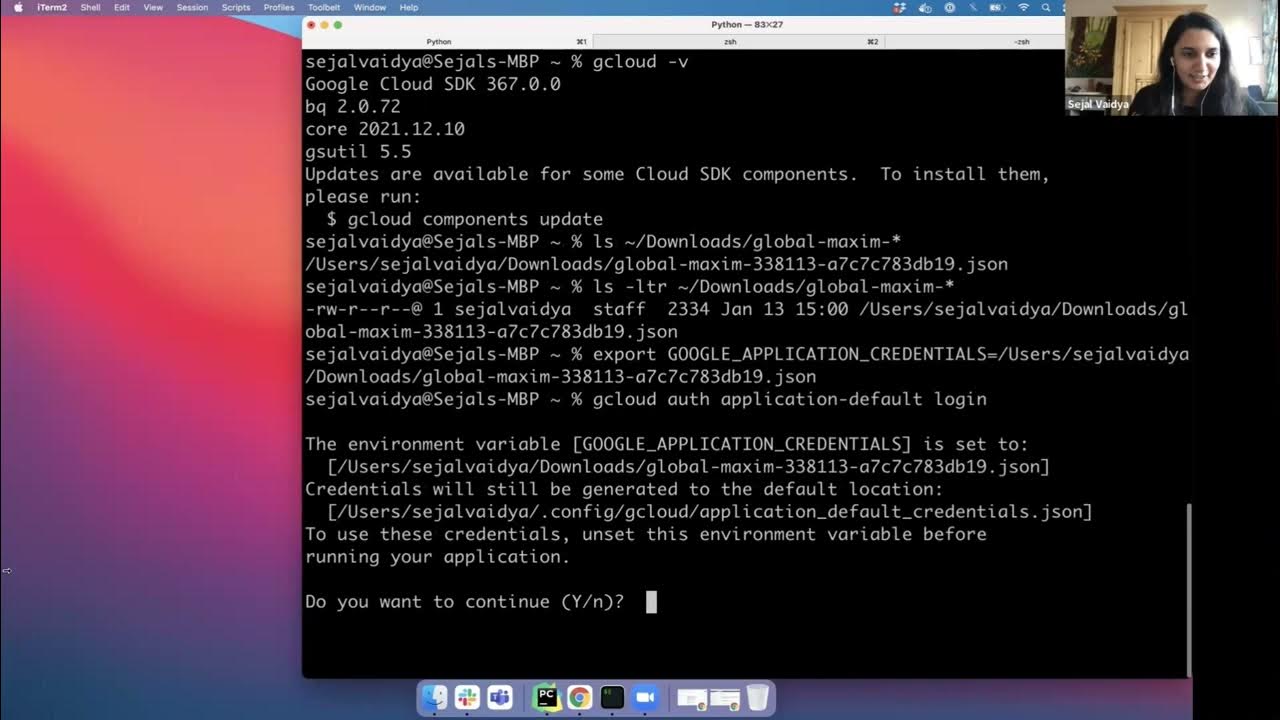What is GitOps, How GitOps works and Why it's so useful
Summary
TLDRThis video explains GitOps, an approach to managing infrastructure as code (IaC) with best practices for automation and collaboration. GitOps ensures that infrastructure, networks, and configurations are version-controlled in a Git repository, using pull requests, CI/CD pipelines, and automated deployments to manage changes. The video highlights the benefits of GitOps, such as easier rollbacks, increased transparency, team collaboration, and enhanced security. By syncing infrastructure with a central repository, GitOps makes managing complex environments more efficient and reduces manual errors.
Takeaways
- 🔧 GitOps treats infrastructure as code (IaC), integrating best practices such as version control and automation.
- 📜 Infrastructure as code (IaC) allows infrastructure and configuration to be defined in code, making it easier to reproduce, replicate, and manage.
- ⚙️ X as code extends the concept of IaC to include network, policy, and configuration as code, enabling unified management through tools like Terraform or Ansible.
- 💻 Traditionally, infrastructure changes were done manually, but GitOps automates the process using CI/CD pipelines for testing and applying changes.
- 🚀 GitOps requires pull requests, ensuring collaboration, code reviews, and testing before changes are merged into the main branch.
- ✅ Automated tests are run on infrastructure code through a CI pipeline, ensuring no broken or incorrect configurations are deployed.
- 🔄 GitOps supports both push-based and pull-based deployment models. In pull-based deployments, agents in the environment sync with the Git repository.
- 🔙 GitOps simplifies rollbacks by allowing environments to be reverted to any previous state defined in the Git repository, enhancing reliability.
- 🔒 Security is improved with GitOps as fewer team members need direct access to infrastructure, relying on the CI/CD pipeline for deploying changes.
- 📂 The Git repository becomes the single source of truth for infrastructure and platform configuration, centralizing management and ensuring consistency.
Q & A
What is the main concept behind GitOps?
-GitOps is a methodology for infrastructure as code that emphasizes best practices like version control, pull requests, and automated pipelines, similar to how application code is managed. It treats infrastructure changes as code, ensuring transparency, collaboration, and automation.
How does GitOps differ from traditional infrastructure management?
-In traditional infrastructure management, changes are often applied manually from a local machine, and there is no formal review or automation process. GitOps uses version control, collaboration through pull requests, and automated deployment pipelines, making it more efficient, transparent, and secure.
What is meant by 'X as Code' in the context of GitOps?
-'X as Code' refers to various types of infrastructure definitions being managed as code, including not just infrastructure, but also network, configuration, and policies. This unifies different aspects of infrastructure management under code-based processes.
Why is version control important in GitOps?
-Version control is crucial in GitOps because it allows teams to track changes, collaborate, and maintain a history of all modifications. It ensures that the infrastructure state is stored in a central repository, making rollback and audit processes simpler.
How does the pull request process improve collaboration in GitOps?
-The pull request process ensures that infrastructure changes are reviewed and approved by multiple team members before they are merged into the main branch. This allows for better collaboration, reduces errors, and improves the quality of infrastructure code.
What is the role of a CI pipeline in GitOps?
-In GitOps, the CI (Continuous Integration) pipeline validates and tests the infrastructure code changes before they are applied to the environment. This helps catch errors like syntax issues or misconfigurations early, preventing faulty deployments.
What are the two deployment models mentioned in GitOps, and how do they work?
-The two deployment models in GitOps are push-based and pull-based. In push-based, a pipeline pushes changes to the environment after validation. In pull-based, an agent in the environment pulls changes from the Git repository and applies them, ensuring the environment matches the desired state defined in the repository.
How do tools like Flux CD and Argo CD fit into GitOps?
-Flux CD and Argo CD are examples of GitOps tools that use the pull-based model. They run inside the Kubernetes cluster and continuously sync changes from the Git repository to ensure that the environment reflects the desired state as defined in the code.
How does GitOps improve security in managing infrastructure?
-GitOps enhances security by limiting who has direct access to the infrastructure. Changes are made through the CI/CD pipeline, not by individual engineers directly accessing the environment. This reduces the risk of unauthorized changes and improves control over the deployment process.
What is one of the major advantages of GitOps regarding rollbacks?
-GitOps makes rollbacks easy by using version control. If a change causes issues in the environment, engineers can simply revert to a previous version of the infrastructure code, restoring the environment to a known good state.
Outlines

Cette section est réservée aux utilisateurs payants. Améliorez votre compte pour accéder à cette section.
Améliorer maintenantMindmap

Cette section est réservée aux utilisateurs payants. Améliorez votre compte pour accéder à cette section.
Améliorer maintenantKeywords

Cette section est réservée aux utilisateurs payants. Améliorez votre compte pour accéder à cette section.
Améliorer maintenantHighlights

Cette section est réservée aux utilisateurs payants. Améliorez votre compte pour accéder à cette section.
Améliorer maintenantTranscripts

Cette section est réservée aux utilisateurs payants. Améliorez votre compte pour accéder à cette section.
Améliorer maintenantVoir Plus de Vidéos Connexes

8 Terraform Best Practices that will improve your TF workflow immediately

Infrastructure as Code - CompTIA Network+ N10-009 - 1.8

Introduction to Infrastructure as Code (IaC)

DE Zoomcamp 1.3.1 - Introduction to Terraform Concepts & GCP Pre-Requisites

Implementing Infrastructure as Code with Terraform | AWS Cloud Resume Challenge - Part 6

Day-16 | Infrastructure as Code | #terraform #IaC
5.0 / 5 (0 votes)
